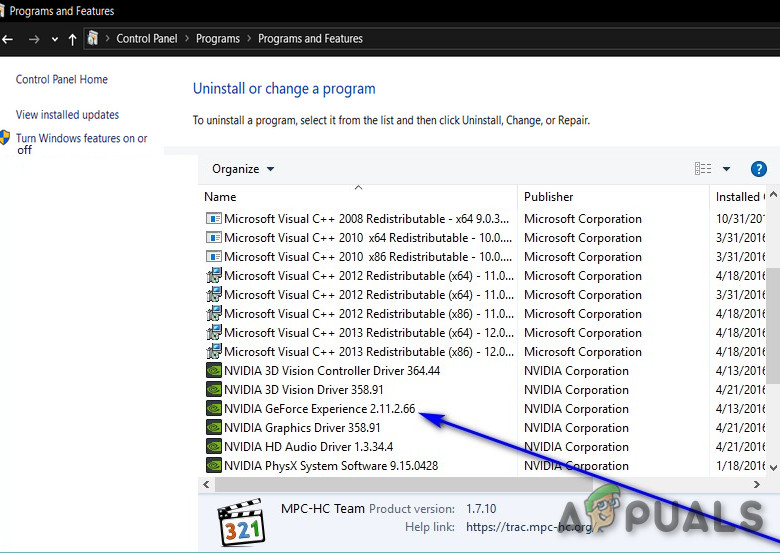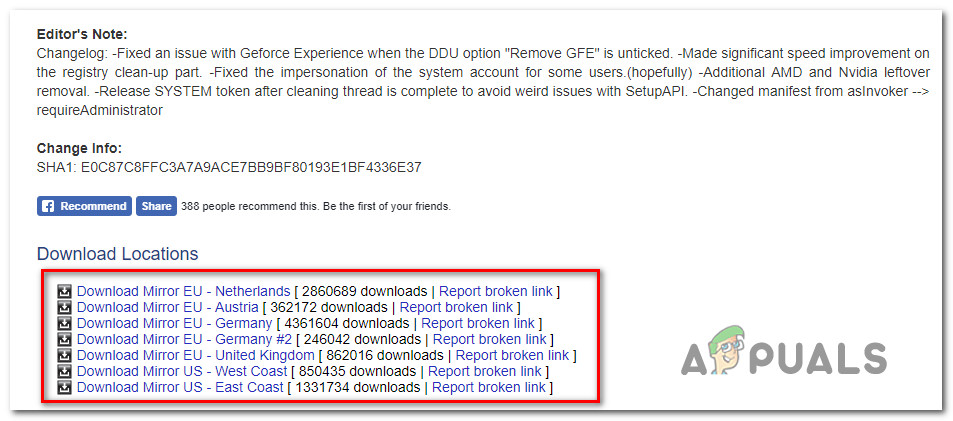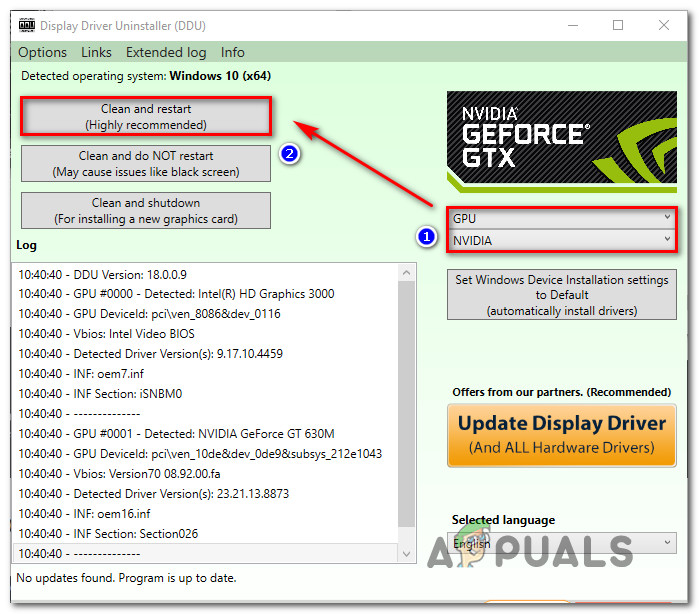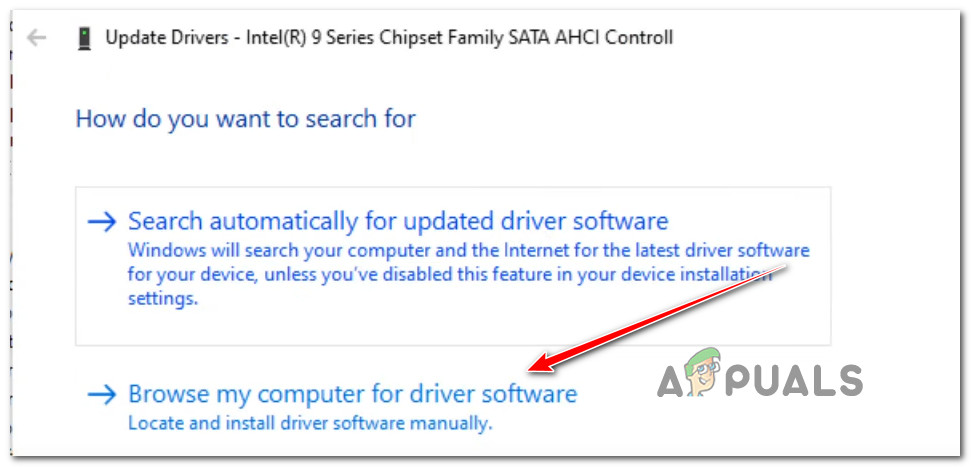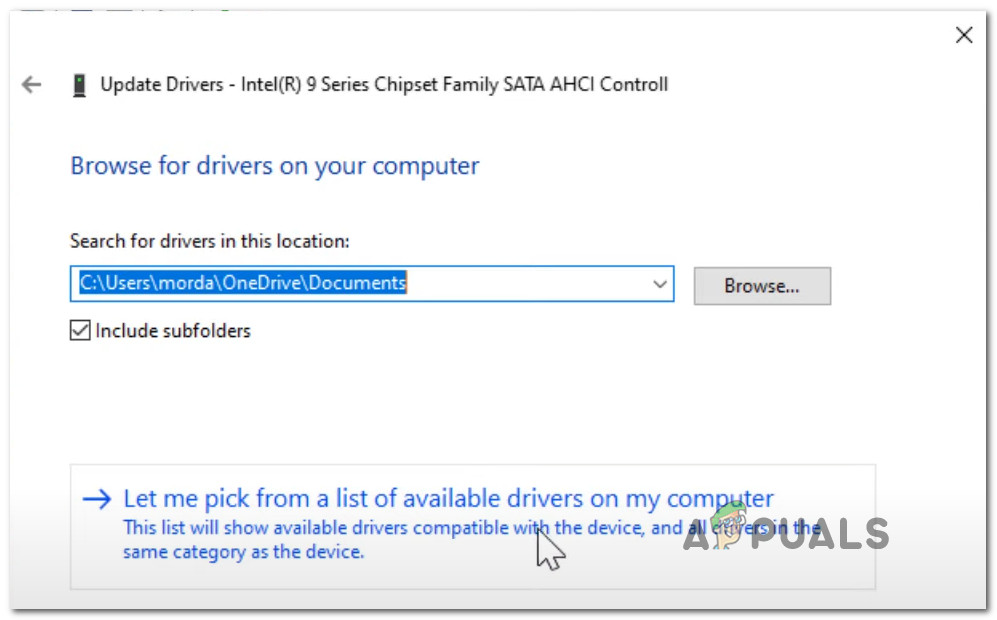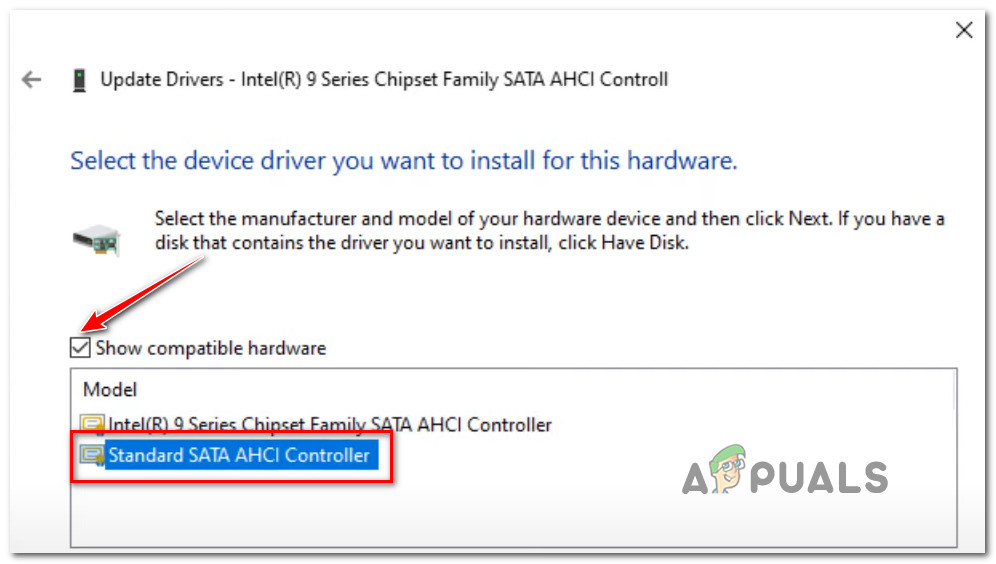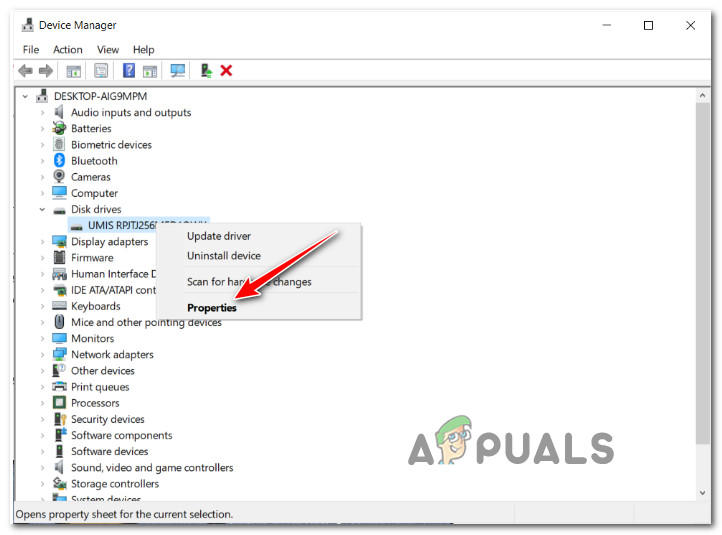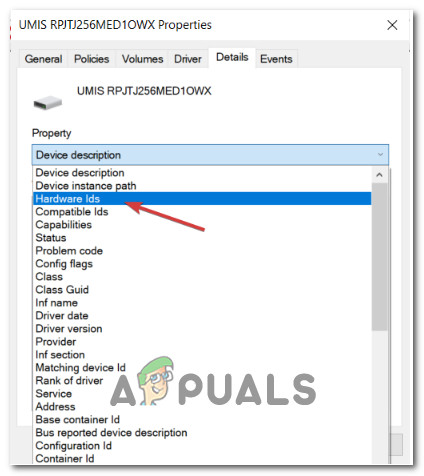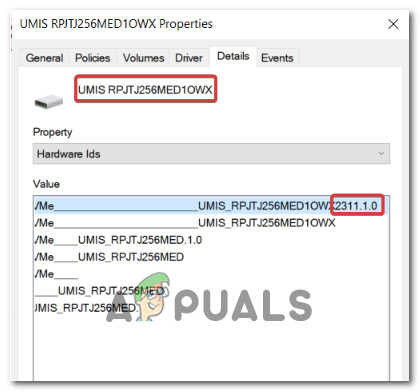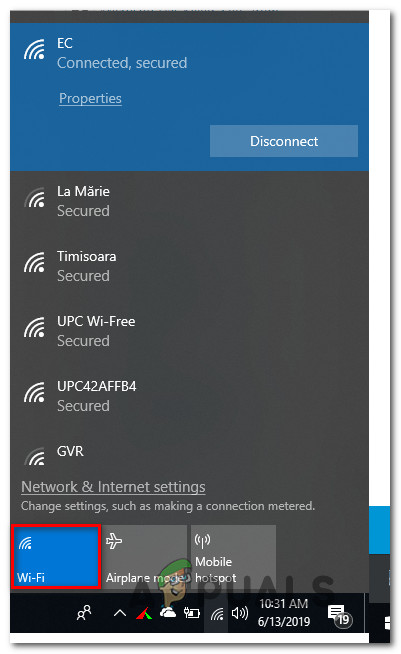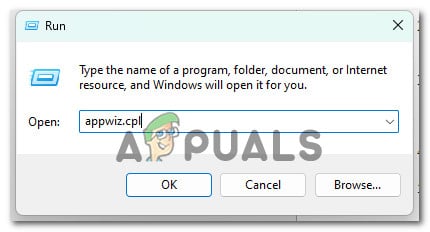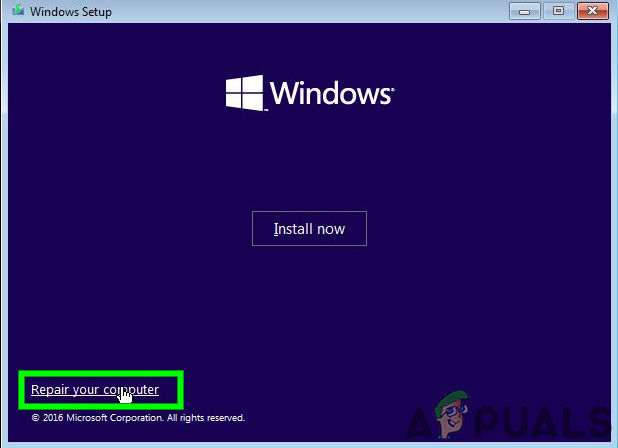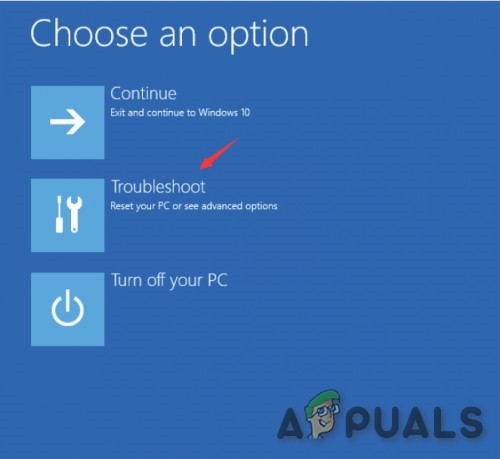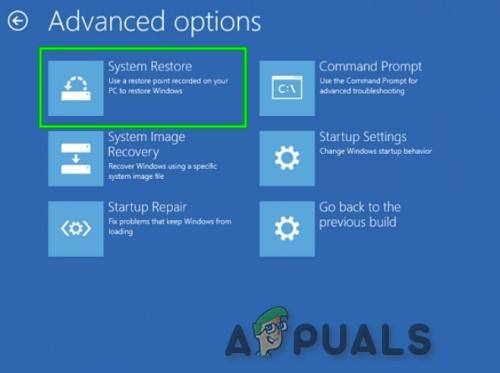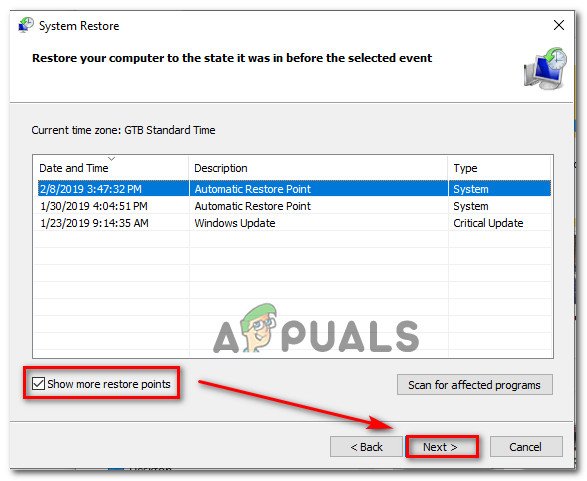We’ve investigated this particular issue thoroughly and made a list of every potential scenario that will ultimately force your PC to crash with the DPC_WATCHDOG_VIOLATION error: Now that we went over every potential reason why the DPC_WATCHDOG_VIOLATION error is occurring, let’s explore every verified user-suggested fix that will help you address this pesky BSOD error code:
1. Clean and Reinstall GPU drivers using DDU (AMD and Nvidia)
One of the reasons you might experience this problem is when your graphics card is forced to work with an incompatible driver or due to some kind of system file corruption. According to other affected users, this problem can also be related to a case where you’re dealing with some corrupted driver dependencies that will force the system to default to a BSOD screen whenever it has to do resource-intensive GPU tasks. If this scenario is applicable, you should be able to fix the problem by uninstalling your current fleet of GPU drivers and using the DDU (Display Driver Uninstaller) utility to clear any remnant GPU drivers before installing the latest version compatible with your model. For specific instructions on how to do this, follow the instructions below: Note: The instructions below will work for both Nvidia and AMD GPUs. If the problem is still not fixed or you already had the latest GPU version installed, move down to the next method below.
2. Install every pending Windows infrastructure update
If you have a high-end PC, you’ll want to make sure you’re up-to-date on all the latest Windows infrastructure updates. This is important to do if you find yourself getting this error often when your PC is performing resource-intensive tasks. If your Windows installation is missing any key infrastructure update, you might be able to fix the DPC_WATCHDOG_VIOLATION error permanently by bringing your Windows 11 up to date. For specific instructions on how to do this on Windows 10 or Windows 11, follow the instructions below: If the DPC_WATCHDOG_VIOLATION error is still persisting, move down to the next method below.
3. Change the IDE ATA/ATAPI Controller drivers
It looks like many of the user reports about this issue can be linked to a problem with the ATA / ATAPI Controller drivers. Several affected users have said that they were able to fix the issue by updating to the latest version through Device Manager. Note: This method is typically effective in situations where a traditional HDD is used. Several affected users have confirmed that once they transitioned from the currently in-use ATA / ATAPI Controller driver to a generic equivalent, the DPC_WATCHDOG_VIOLATION error stopped occurring entirely. Follow the instructions below for the complete steps on migrating away from the currently used ATA / ATAPI Controller driver: In case you’re still experiencing the same DPC_WATCHDOG_VIOLATION error is still occurring, move down to the next method below.
4. Update the SSD firmware
If you’re using a newer SSD model, you should check to see if there’s an updated driver available. To do this, go to Device Manager and grab the SSD model number. Once you have that, go online and see if there’s a new firmware update that you can install. Important: Before you update the firmware on your SSD, make sure to back up your data first. Updating the firmware will erase all data from your drive. A lot of users experiencing this type of error have confirmed that the DPC_WATCHDOG_VIOLATION error no longer occurred after they followed the instructions below to identify their SSD model number and used it to find a newer driver version. Note: You can also attempt to update the SSD firmware via Device Manager, but don’t get your hopes up as the chances of finding an updated version are very slim. Here’s what you need to update the SSD firmware to the latest: If you’re still experiencing the same type of DPC_WATCHDOG_VIOLATION BSODs, try the next method below.
5. Uninstall the Synaptic drivers (if applicable)
After investigating many user reports, one potential culprit for the DPC_WATCHDOG_VIOLATION error appears to be the Synaptics SMBus TouchPad driver. If this driver is causing the unexpected BSOD, uninstalling it will force Windows to use a generic driver equivalent which will resolve the issue swiftly. Note: This method is confirmed to be effective on both Windows 10 and Windows 11 laptops. Uninstalling the Synaptic driver means that your Windows installation will be forced to revert back to a series of generic drivers. Instead of reinstalling the Synaptic touchpad drivers once again, we recommend continuing using the generic equivalents (especially if you’re not actively your laptop touchpad) Follow the instructions below to uninstall the Synaptics drivers: If the same kind of issue is still occurring, move down to the next method below.
6. Remove all Connected External Devices
Strange as it may sound, a peripheral device or another external factor might be to blame for this type of error. We can’t give you a definitive list of situations where this problem occurs, but you can try disconnecting all non-essential peripherals until you narrow down the source of your particular issue. It turns out that this particular issue can also occur due to a power draw problem. If your power supply unit (PSU) is not sufficient to sustain all your USB-connected devices, you might experience this critical DPC_WATCHDOG_VIOLATION BSOD because your system is unable to provide the required power. This is specifically reported to occur with configurations that have external hard drives connected through USB. If this scenario is applicable to your current situation, try removing the external hard drive (if applicable) and see if you still get random disconnects. If the error stops occurring after you disconnect external devices and you plan on fixing the issue without losing any functionality whatsoever, you have two ways forward:
Get a higher PSU that is able to provide more power to your USB-connected devices. Of course, this is only applicable with desktop configurations.Get a USB hub with an external power supply. This should be the fix if you’re encountering the issue on a laptop or ultrabook. USB hubs with included power adapters will take the load off your PSU.
If this method is not applicable in your particular scenario or it didn’t make a difference, move down to the next method below.
7. Check & Fix disk errors with CHKDSK
It turns out that this particular issue can also be caused by some bad sectors on your HDD that might be causing general system instability. If bad sector data affects a critical service, it’s likely that your system will trigger a stop error that forces the machine to restart. Several users who were struggling with this problem have confirmed that running a CHKDSK (Check Disk Utility) scan resolved the issue for them entirely. Most users who pursued this fix have reported that the BSOD with the DPC_WATCHDOG_VIOLATION status error code stopped occurring after the procedure was complete. Here’s a quick guide on running a CHKDSK scan: If you’re still experiencing the same DPC_WATCHDOG_VIOLATION status error code, try the next method below.
8. Use a System Restore point
As it turns out, the DPC_WATCHDOG_VIOLATION status BSOD might also occur when a recent change to Windows affects the boot configuration data. The best way to fix this problem is to use the System Restore wizard to revert your machine to a point where this problem wasn’t occurring. Info: The System Restore can use snapshots that are regularly saved to restore the computer state as a whole to the period in time when the snapshot was created. If you are lucky enough to have a snapshot from just before the problem started occurring, you will be able to fix the issue with minimal data loss. Keep in mind that by default, the System Restore utility is configured to create new system startups at important events such as installing a Windows update or a new driver version. If you haven’t changed this default behavior, you should have plenty of System Restore points to choose from. Here is a quick guide on how to use the System Restore utility to restore your PC back to a previous state: Note: We recommend opening the System Restore utility from the Recovery menu in order to improve the likely hood of success.
9. Deploy SFC and DISM scans
Some users have found that this error can occur due to corruption in system files which are the high resource-consuming aspect of Windows. If you see a DPC_WATCHDOG_VIOLATION error every time you try to render something or open a resource-consuming application, you should use some built-in utilities which can fix common causes of system file corruption. You can use SFC (System File Checker) and DISM (Deployment Image Servicing and Management) to locate the corrupted files causing the problem and replace them with healthy equivalents. Note: Although these two utilities share a core similarity, they go about fixing corruption in different ways. SFC uses a locally stored archive while DISM uses a sub-component of Windows Update to download clean files. If you want to try this method, start by launching an SFC scan. Once the scan is complete, reboot your computer and run a DISM scan. If the utility finds and fixes an underlying corrupt issue, follow the on-screen prompts to replace corrupted files. Note: Before you launch the DISM operation, make sure you have a stable Internet connection. Once the DISM scan is completed successfully, reboot your computer once again and see if the problem has been fixed.
10. Clean install or repair install
If you’ve tried all the potential fixes and you’re still seeing the same DPC_WATCHDOG_VIOLATION error code when performing res, chances are you’re dealing with some kind of system file corruption affecting a dependency used by the backup sequence. The next step would be to reset every Windows component with a procedure like a clean install or repair install (in-place repair). A clean install is an easy route, but keep in mind that this will delete all personal data on your OS drive. You won’t need compatible installation media for this process. Repair install (in-place repair) is more tedious but has the advantage of refreshing every potentially corrupted component without losing data from apps, games, documents, and personal media stored on your OS drive. For this process, you will need compatible installation media.
Fix: ATTEMPTED SWITCH FROM DPC Blue Screen of Death ErrorFix: High DPC Latency on Windows 10How to Fix the Stop Code DRIVER PNP WATCHDOGUK Watchdog Demands Nintendo to Compensate Switch Owners with Joy-Con Drift


